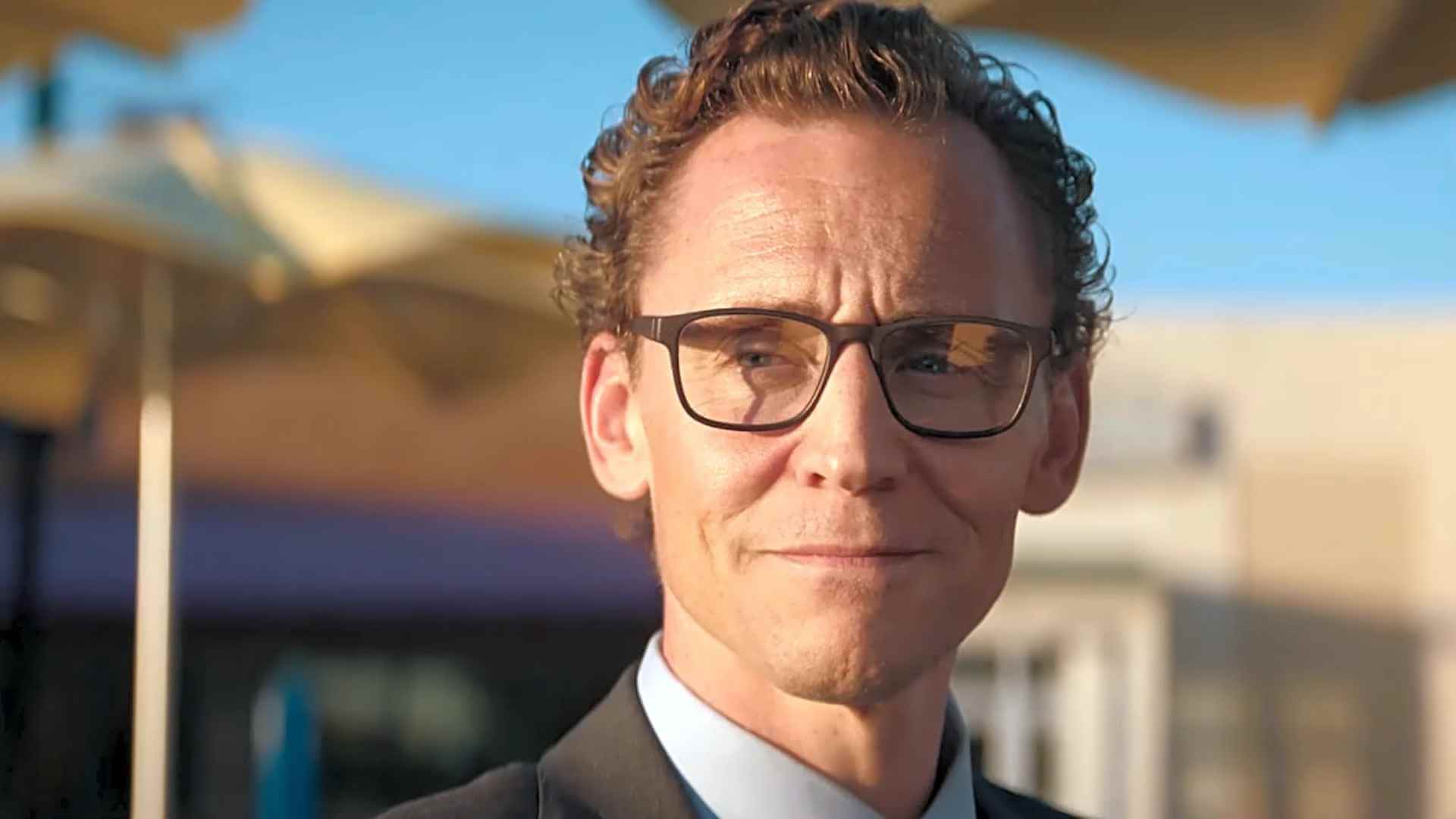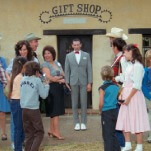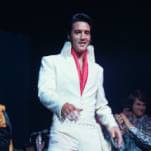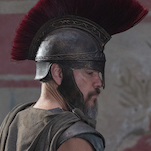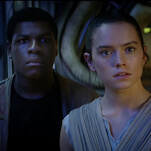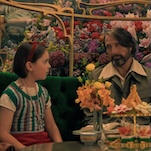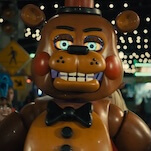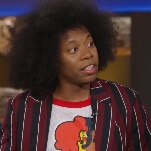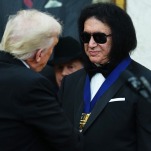In a directorial career that now spans nearly 15 years, eight feature films, and five streaming series, Mike Flanagan has built a reputation as one of the great modern practitioners of emotional, character-centered genre filmmaking. He’s also built a reputation as a guy whose characters talk in long monologues about the meaning of life, and whose stories often take detours from their pulse-pounding stories in search of a greater meaning. Depending on what you see in Flanagan’s stories—mostly horror, several of which are extended explorations of epic concepts, like the accumulation of centuries of trauma or the undoing of an ultra-wealthy family—you either love these preoccupations or find them tiresome. But there’s no denying he has a personal style. Well beyond his stock company of actors and collaborators like Henry Thomas, Samantha Sloyan, and Kate Siegel, there’s one hallmark in particular that he’s been steadily building up in his work for more than a decade. It’s not the speeches, or the steep emotional climbs, or the slow-burn pacing, though those are all there. No, Flanagan’s greatest gift as a storyteller is his knack for narrative synchronicity, and with The Life of Chuck he’s honed it to a fine point.
Like the Stephen King story it’s derived from, The Life Of Chuck unfolds in reverse chronological order—but there’s more to it than that. While the life of Chuck (Tom Hiddleston as an adult, Jacob Tremblay as a teenager, Benjamin Pajak and Cody Flanagan as a child) unfolds in reverse, the film also dips in and out in a decidedly nonlinear way, popping back and forth in time as the narrative needs it, and even stepping sideways into a parallel world that exists entirely in Chuck’s mind. It is, like so many of Flanagan’s projects, a story that enjoys playing with time.
But Flanagan, a nerd for story structure who’s also constantly probing metaphorical spaces in his work, isn’t content to simply go nonlinear. For him, a narrative like The Life Of Chuck is a sandbox to build synchronicities, visual and narrative cues that echo, rhyme, and mirror one another in ways that not only keep an audience paying close attention, but layer deeper meaning into the story. It’s through these synchronicities, sometimes invisible but always present, that Flanagan’s work becomes so much more than a string of speeches about the meaning of life and death.
For proof, look to Flanagan’s major feature debut (after his indie feature Absentia): 2013’s Oculus. Directed and co-written by Flanagan, it’s nominally a cursed object film about a haunted antique mirror, told through two siblings (Karen Gillan and Brenton Thwaites) as they confront the mirror via an elaborate paranormal investigation. In the process, they also sort through their memories of a traumatic childhood and the death of their parents. Oculus regularly flits back and forth between past and present, with most of the action unfolding in the same house. The shared geography of the past and present allows Flanagan to match shots and moments with ease, but he also takes things further, playing with the twin video cameras the siblings are using to document their investigation, and with the mirror itself, until the whole film becomes a funhouse of lenses, of different ways of perceiving. The purpose is twofold. Obviously, Flanagan wants the film to be scary, and telling the audience that they can’t always trust what they see is a good way to make that happen. But then there’s the constant, underlying meditation in the film on the nature of memory, the way people hold onto images and the way our brains tweak them, sometimes without our permission. Oculus works fine as a spooky mirror movie, but it works so much better because Flanagan is able to tap into all those little micro-connections in order to get to that next level of storytelling.
And it happens over and over again throughout his filmography. You can see it in Hush, with the way his protagonist (Kate Siegel, who also co-wrote the film) is constantly thinking in terms of narrative probability, like a writer who’s become one of her own characters, even with her life on the line. You can see it in Doctor Sleep, with the frequent visual nods to The Shining which—rather than just being a string of Easter eggs—culminate in Dan Torrance’s (Ewan McGregor) long overdue showdown with his dead father (Henry Thomas). And of course, you can see it in The Haunting Of Hill House episode “Two Storms,” in which the members of the Crain family literally walk between their past and present, digging up metaphorical family skeletons while a literal family corpse lies in a casket against one wall.
Using “synchronicity” when describing these narrative tricks is deliberate, referring not only to Flanagan’s work, but that of Carl Jung, who used the term to refer to “meaningful coincidences,” things that aren’t readily linked together by causality, but which our brains interpret to be linked. Your thoughts, your feelings, the car you see in front of you in traffic, the billboard you spot on the highway—these can all be part of a larger, synchronous whole, to the point that if you buy into all of these “meaningful coincidences,” you might eventually see what feels like a miracle.
In the world of Mike Flanagan films, no matter how mundane the setting or realistic the story, everything is always connected. Hush‘s protagonist, Maddie, was discussing her “writer brain” ability to see every possible outcome of a scenario just hours before it became the skill that would save her life. Dan Torrance sat across from his father at the Overlook Hotel because he said in an AA meeting that he always wished he’d gotten to reckon with their shared addiction. Nell Crain (Violet McGraw) was terrified of the Bent-Neck Lady because, tragically, she became her as an adult (Victoria Pedretti), a ghost existing out of time, seeing the whole synchronous spectrum of her family’s pain.
The Life Of Chuck was tailormade for this kind of storytelling. The very first shot, of a bulletin board in a middle school hallway, is the audience’s first introduction to one of the film’s key visual motifs—dance and its impact on the dancer—that’s eventually revealed as a memory Chuck has of the first time he saw a flyer for dance classes. Everything in the first third of the film, “Thanks, Chuck!,” is a direct pull from something Chuck saw, heard, or did during his life, from the speech a funeral director (Carl Lumbly) gives about Carl Sagan’s cosmic calendar to a dance sequence from Cover Girl. It’s all built in because it’s meant to be, because the world of that first act is Chuck’s mind, and the second and third acts are Chuck’s memories, the life he lived which populated said mind.
It’s a great excuse for Flanagan to play with synchronicities on his grandest scale so far, but he doesn’t stop with attention to detail in terms of the mise en scène. Once the structure of The Life Of Chuck becomes clear, the audience is invited to ask questions about it. Why aren’t Chuck’s departed grandparents (Mark Hamill and Mia Sara) in the world inside his mind in a more direct way? Why is it so abstracted? Why do certain images of him sitting at his desk, beamed out to the residents of his mind, look so dismayed? Because Chuck is dying, and the cancer that’s killing him is ripping his mind apart, fragmenting it, making it harder to make sense of things. Maybe that’s why the audience doesn’t see his grandparents as central figures in his mind, and why the darker days of his life seem to manifest in the expression on his face. He’s going through the stages of grief, mourning the life he’s in the process of losing.
But Chuck is also, like so many of Flanagan’s characters, working his way around to a state of acceptance, of understanding that his world, his life, meant something. In the opening minutes, a schoolteacher (Chiwetel Ejiofor) goes home to his empty house and, while on the phone with his ex-wife (Karen Gillan), contemplates a door up the stairs, a padlock hanging from it. He assigns it no meaning, and it isn’t brought up again until the third and final act, when it’s revealed as the door that Chuck’s grandfather kept locked, the door that somehow showed Chuck the manner of his own death. That’s where The Life Of Chuck ends, in an empty cupola at the top of a staircase, where teenage Chuck sees his own death, confronts it, and resolves to live the best life he can in the interim. The audience is then left to contemplate this empty room, what it didn’t mean to one character, and what it meant to another. And what does it mean to those watching? Is it a blank canvas? A dead end? A portal to forbidden knowledge? All of the above?
Flanagan has always been a storyteller who finds hope in the darkest parts of his characters, strength in the things they survive rather than the things they manage to avoid. It’s what makes his horror stories so strikingly human, and what contributes to the larger message that, whether all of these little synchronicities consign us to dark fates or not, we can still find something worth surviving for. The Life Of Chuck is not one of Flanagan’s usual horror stories, but it is focused on the same existential fears that pepper his work. How long do we have on this Earth? Will we spend our time wisely? What does it mean to face your own death? By tapping into his long-practiced ability to interweave these questions throughout an entire film, Flanagan’s most prominent storytelling gift has fully matured, not because he reveals the meaning of the movie at the end, but because if you’re really watching, you’ll see that the meaning was there all along.
